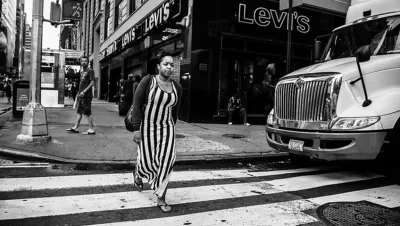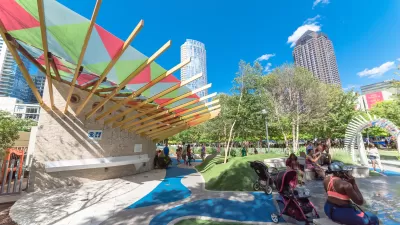You know what racial equity means, but have you heard of 'experiential equity'? Environmental neuroscientist Robin Mazumder explains the term and how it can inform our understanding of equity in the built environment.

Robin Mazumder is breaking new ground in the field of environmental neuroscience, studying the ways in which people experience stress in urban environments. Now, the coronavirus pandemic has added a sense of urgency to Mazumder's research in light of social distancing recommendations that highlight the importance of shared outdoor spaces.
Mazumder's piece illustrates the potential of a young field of study and the author's own focus on racial equity and the study of the lived experiences of marginalized groups. As Mazumder writes, "my experiences of both marginalisation and privilege elucidated the complexity of the human experience, and how that experience can be shaped by barriers created in our social and physical environments. I bring these experiences to my research in environmental neuroscience, where I examine the psychological impacts of our social and physical environments."
Mazumder's work hinges on an important consideration: that not all people experience the built environment and public space in the same way. The pandemic has amplified stress as well as the role of public space to mitigate that stress. Moreover, the recent protests against police brutality and anti-Black racism have "demonstrated the importance of how access to public space can support well-being, the protests demand we ask to whom that public space is open and accessible," says Mazumder.
Pointing to the work of such Black scholars as W. E. B. Du Bois, Dr. Rodney Clark, and Kimberlé Crenshaw, Mazumder acknowledges the role of disciplinary collaboration in furthering the understanding of disparate experiences of the built environment.
Mazumder posits a new term, experiential equity, to "acknowledge the psycho-spatial disparities that exist in the human experience of public space and the associated violence to the body and mind that are caused by these disparities."
Plans are being made to employ the experiential equity framework to inform work on the City of Edmonton’s Zoning Bylaw Renewal for which Mazumder is an advisor.
"This work has just begun and I am keen, and hopeful, that it will provide a tangible example of how experiential equity can be used to facilitate societal change, and to help create urban environments that account for and support everyone’s dignity and well-being," says Mazumder.
FULL STORY: Public spaces are essential – but not yet equal

Alabama: Trump Terminates Settlements for Black Communities Harmed By Raw Sewage
Trump deemed the landmark civil rights agreement “illegal DEI and environmental justice policy.”

Planetizen Federal Action Tracker
A weekly monitor of how Trump’s orders and actions are impacting planners and planning in America.

The 120 Year Old Tiny Home Villages That Sheltered San Francisco’s Earthquake Refugees
More than a century ago, San Francisco mobilized to house thousands of residents displaced by the 1906 earthquake. Could their strategy offer a model for the present?

In Both Crashes and Crime, Public Transportation is Far Safer than Driving
Contrary to popular assumptions, public transportation has far lower crash and crime rates than automobile travel. For safer communities, improve and encourage transit travel.

Report: Zoning Reforms Should Complement Nashville’s Ambitious Transit Plan
Without reform, restrictive zoning codes will limit the impact of the city’s planned transit expansion and could exclude some of the residents who depend on transit the most.

Judge Orders Release of Frozen IRA, IIJA Funding
The decision is a victory for environmental groups who charged that freezing funds for critical infrastructure and disaster response programs caused “real and irreparable harm” to communities.
Urban Design for Planners 1: Software Tools
This six-course series explores essential urban design concepts using open source software and equips planners with the tools they need to participate fully in the urban design process.
Planning for Universal Design
Learn the tools for implementing Universal Design in planning regulations.
Clanton & Associates, Inc.
Jessamine County Fiscal Court
Institute for Housing and Urban Development Studies (IHS)
City of Grandview
Harvard GSD Executive Education
Toledo-Lucas County Plan Commissions
Salt Lake City
NYU Wagner Graduate School of Public Service





























